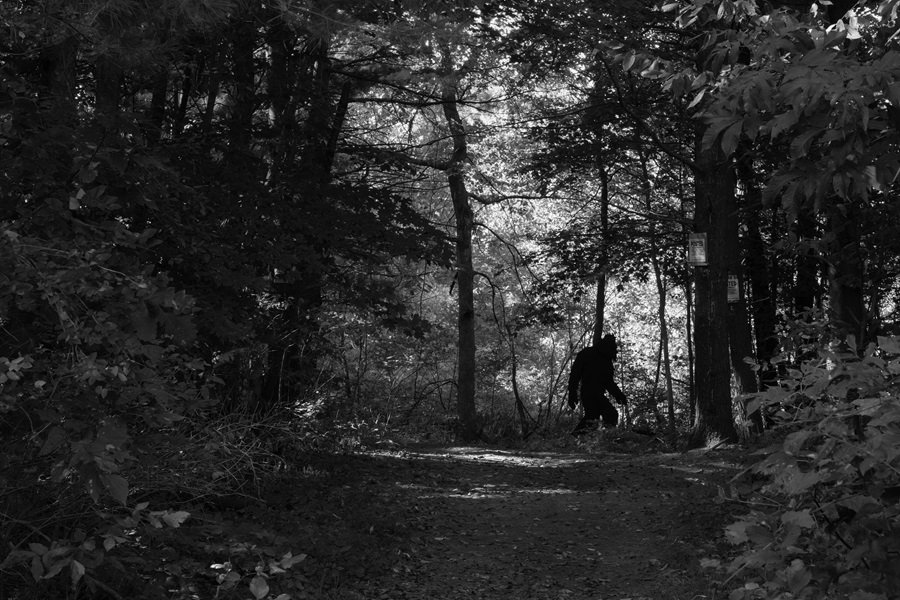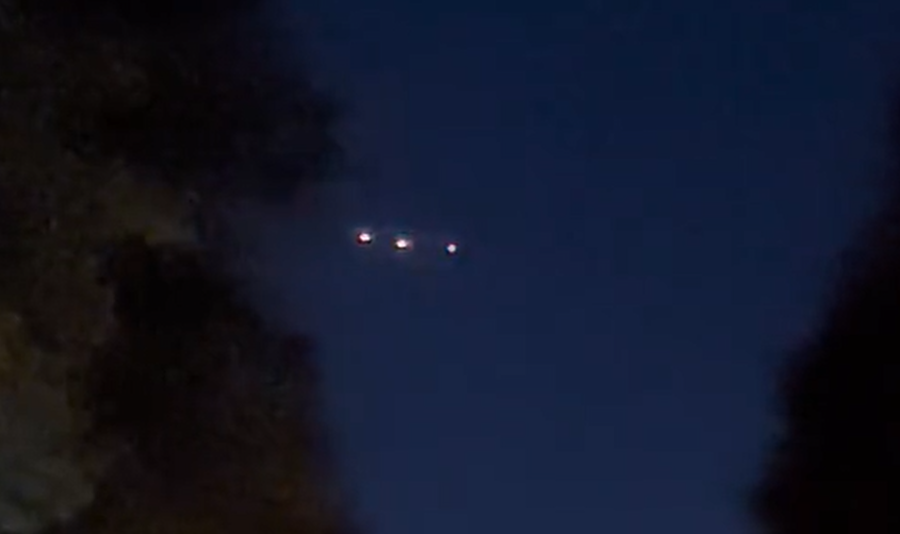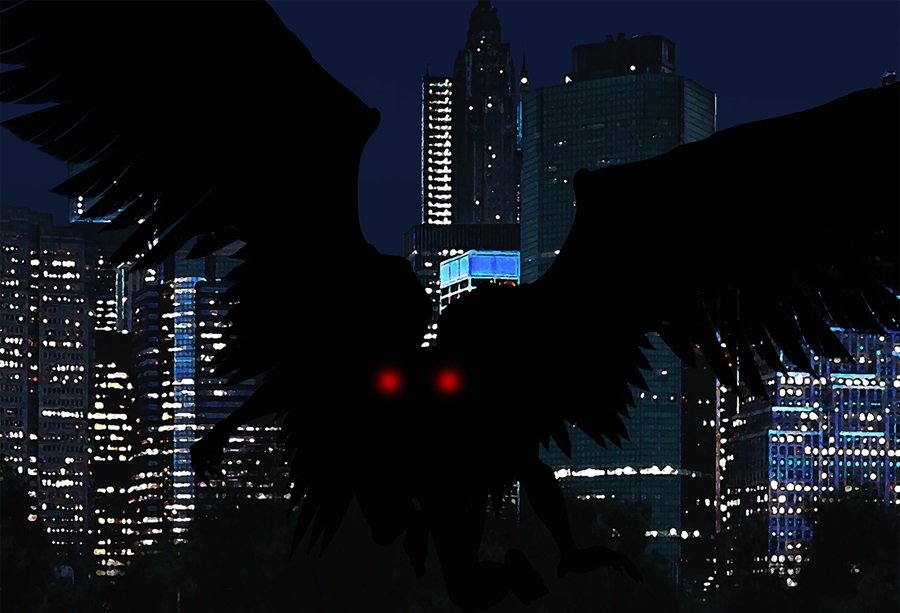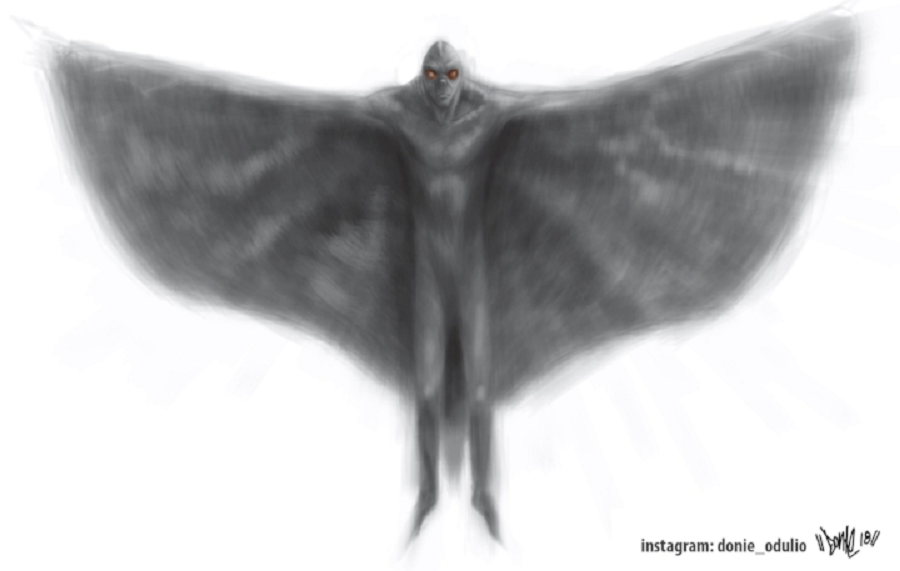Upright Bear in North Carolina Draws Comparison to Bigfoot
Two images posted by Erin McAllister showing the bear standing upright, an activity that itself is not unusual for a bear. (Erin McAllister / Facebook)
North Carolina resident Erin McAllister shared a series of photos to Facebook last Sunday that drew an immediate comparison to bigfoot from some viewers. The day before, McAllister was visiting Pocosin Lakes National Wildlife Refuge near Bull Bay with her boyfriend, fellow East Carolina student Zachary Allen, when they took the photos, which show a roughly five-foot-tall black bear standing upright; it at first stares into the distance before turning to look at the two students.
According to the U.S. Fish & Wildlife service, “Pocosin Lakes National Wildlife Refuge has what is believed to be one of the largest concentrations of black bear found in the southeastern United States…The estimated population is between 370 and 500, with a density on good habitat of three to four bears per square mile.”
“To be honest, when we both first saw it, we weren’t even sure it was real!” McAllister told McClatchy News. “It was standing so still and stoically. We had both never seen black bears in the wild before—but my boyfriend...could tell right away that the bear in that standing position seemed kind of unnatural and odd. It stood in that position for close to 10 minutes.”
McAllister said the bear "seemed wholly unbothered by us, and aside from a slight glance our direction, continued looking towards the forest on the other side of the road. After a few minutes, I noticed a group of three similarly sized black bears run in front of our car...Once this standing bear saw them, he quickly lowered himself back onto all fours, and ran off into the woods to meet them.”
A bear standing upright is not itself unusual, as they routinely do so to get a better view of their surroundings, but the photos elicited a large reaction among the groups to which they were shared, and several people compared the animal to a bigfoot or sasquatch.
“Thought it was Bigfoot!” commented Brentley Norman on the Facebook group Carolina Critters.
“A real Sasquatch!” added Sallie Ellinwood.
Some took a lighthearted approach to the photos, like Andy Cambron, who commented “Clearly that is a Bigfoot in a bear costume,” to NewBernNow.
Bears have long been a popular explanation for many bigfoot sightings, especially in the southeastern part of the United States, where the undiscovered hairy hominids are sometimes referred to colloquially as “skunk apes.”
Although their numbers have waned in the face of human encroachment, black bears can still be found throughout the Southeast, from the Carolinas to portions of Alabama, Georgia, Mississippi, and Florida. They live mostly in protected areas, such as national forests, swamps, and preserves—likely places for a skunk ape sighting—which makes misidentified black bears a popular explanation among skeptics. Incursion by humans has significantly threatened their habitat, and the proximity of civilization has made run-ins between bears and humans more frequent, which leads some to believe that the increase in interactions between human and bear could result in more instances of them being misidentified.
However, there is room for doubt in this explanation for skunk ape or other bigfoot sightings. The first is the black bear's size; they're relatively small for bears, with males averaging just 300 pounds. And while skunk apes are reportedly smaller than the sasquatch commonly reported in the Pacific Northwest, they are still often depicted as being taller than the four to six foot range that these bears average in length.
Many sightings of skunk apes are also of them in motion, and eyewitness descriptions mention specifically that they move bipedally, something that bears generally don't do; although exceptions do exist, like Pedals, a black bear in New Jersey who routinely walked on his hind legs due to injuries to his front paws.
Cryptid researchers argue that it seems unlikely someone would confuse a quadrupedal bear for a bipedal hominid under most conditions. Many in the field agree that if all that is seen is a quick glimpse of something large and dark in a heavily wooded area, then the chance of misidentifying a bear exists, but many of the strongest reports to come out of the south involve a much clearer view of the creature, such as Richard Smith's 1974 sighting.
To report your own encounter with the impossible, reach out to us directly at the Singular Fortean Society through our contact page.
If you enjoyed this article and would like to support the Singular Fortean Society, please consider becoming an official member by signing up through our Patreon page—membership includes a ton of extra content and behind-the-scenes access to the Society’s inner workings.



















